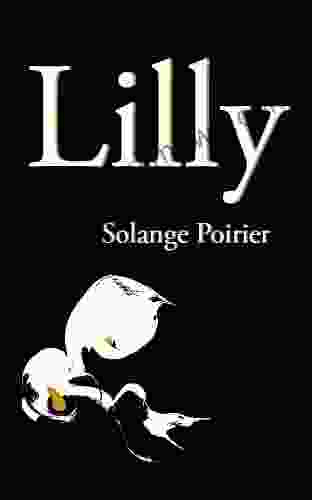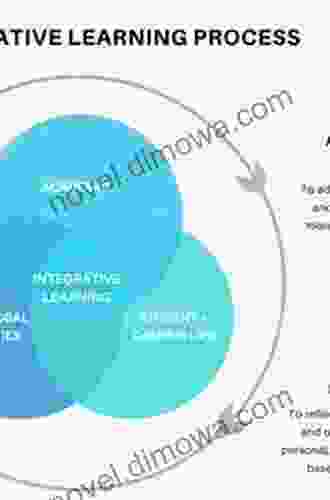Fuzzy Graph Theory With Applications To Human Trafficking Studies In Fuzziness: Understanding and Combating a Global Problem

5 out of 5
| Language | : | English |
| File size | : | 18654 KB |
| Text-to-Speech | : | Enabled |
| Screen Reader | : | Supported |
| Enhanced typesetting | : | Enabled |
| Word Wise | : | Enabled |
| Print length | : | 531 pages |
Human trafficking is a global problem that affects millions of people. It is a complex and often hidden problem, which makes it difficult to understand and combat. Fuzzy graph theory is a powerful tool for modeling and analyzing complex systems, and it has been increasingly used in recent years to study human trafficking. This book provides an overview of fuzzy graph theory and its applications to human trafficking studies. It includes chapters on the following topics:
- Fuzzy graph theory basics
- Human trafficking and fuzzy graphs
- Modeling human trafficking networks
- Identifying trafficking victims
- Preventing human trafficking
This book is intended for a wide audience, including researchers, practitioners, and policymakers. It is also suitable for use as a textbook for graduate courses on human trafficking or fuzzy graph theory.
Fuzzy Graph Theory Basics
Fuzzy graph theory is a branch of mathematics that deals with graphs in which the edges are labeled with fuzzy sets. Fuzzy sets are sets that allow for partial membership, which means that an element can belong to a set to a degree. This makes fuzzy graph theory a powerful tool for modeling and analyzing complex systems, such as human trafficking networks.
There are several different types of fuzzy graphs, but the most common type is the fuzzy digraph. A fuzzy digraph is a directed graph in which the edges are labeled with fuzzy sets. The fuzzy sets can be used to represent the strength of the relationship between the nodes in the graph. For example, in a human trafficking network, the fuzzy sets could be used to represent the likelihood that a particular node is involved in trafficking activities.
Human Trafficking and Fuzzy Graphs
Human trafficking is a complex and often hidden problem. It is a global problem that affects millions of people, and it can take many different forms. Human trafficking can involve the recruitment, transportation, and exploitation of people for the purpose of sexual exploitation, forced labor, or other forms of abuse.
Fuzzy graph theory can be used to model and analyze human trafficking networks. By representing the relationships between nodes in the network as fuzzy sets, it is possible to capture the complexity and uncertainty of the network. This information can then be used to identify trafficking victims, prevent human trafficking, and disrupt trafficking networks.
Modeling Human Trafficking Networks
One of the most important applications of fuzzy graph theory to human trafficking studies is the modeling of human trafficking networks. A human trafficking network is a complex system that involves multiple actors and interactions. These actors may include traffickers, victims, and law enforcement officials. The relationships between these actors can be complex and dynamic, and they can change over time.
Fuzzy graph theory can be used to represent the relationships between actors in a human trafficking network. The fuzzy sets can be used to represent the strength of the relationship between two actors, and the edges can be used to represent the type of relationship. For example, an edge could represent a financial relationship, a sexual relationship, or a relationship of trust.
Once a human trafficking network has been modeled using fuzzy graph theory, it is possible to analyze the network to identify patterns and trends. This information can then be used to identify trafficking victims, prevent human trafficking, and disrupt trafficking networks.
Identifying Trafficking Victims
One of the most important challenges in combating human trafficking is identifying victims. Human trafficking victims are often hidden and isolated, and they may be afraid to come forward for help. Fuzzy graph theory can be used to develop tools to help identify trafficking victims.
One approach to identifying trafficking victims is to use fuzzy graph theory to model the social networks of potential victims. By identifying the people who are most closely connected to known traffickers, it is possible to identify potential victims who are at high risk of being trafficked.
Another approach to identifying trafficking victims is to use fuzzy graph theory to analyze the language used by potential victims. Victims of trafficking often use language that is indicative of their experiences. By analyzing the language used by potential victims, it is possible to identify those who are at high risk of being trafficked.
Preventing Human Trafficking
Preventing human trafficking is a complex challenge, but it is essential to reducing the number of victims. Fuzzy graph theory can be used to develop tools to help prevent human trafficking. One approach to preventing human trafficking is to use fuzzy graph theory to model the factors that contribute to trafficking. By identifying the factors that make people vulnerable to trafficking, it is possible to develop policies and programs to address these factors and reduce the number of people who are trafficked.
Another approach to preventing human trafficking is to use fuzzy graph theory to develop educational materials and training programs for law enforcement officers and social workers. By educating law enforcement officers and social workers about the signs of human trafficking, it is possible to increase the chances of identifying and rescuing victims.
5 out of 5
| Language | : | English |
| File size | : | 18654 KB |
| Text-to-Speech | : | Enabled |
| Screen Reader | : | Supported |
| Enhanced typesetting | : | Enabled |
| Word Wise | : | Enabled |
| Print length | : | 531 pages |
Do you want to contribute by writing guest posts on this blog?
Please contact us and send us a resume of previous articles that you have written.
 Book
Book Novel
Novel Page
Page Chapter
Chapter Text
Text Story
Story Genre
Genre Reader
Reader Library
Library Paperback
Paperback E-book
E-book Magazine
Magazine Newspaper
Newspaper Paragraph
Paragraph Sentence
Sentence Bookmark
Bookmark Shelf
Shelf Glossary
Glossary Bibliography
Bibliography Foreword
Foreword Preface
Preface Synopsis
Synopsis Annotation
Annotation Footnote
Footnote Manuscript
Manuscript Scroll
Scroll Codex
Codex Tome
Tome Bestseller
Bestseller Classics
Classics Library card
Library card Narrative
Narrative Biography
Biography Autobiography
Autobiography Memoir
Memoir Reference
Reference Encyclopedia
Encyclopedia Starr Meade
Starr Meade Yvonne Eriksson
Yvonne Eriksson Velma Wallis
Velma Wallis Robert B Bruce
Robert B Bruce Sally Fritzsch
Sally Fritzsch Tony Hillerman
Tony Hillerman Robert Nichols
Robert Nichols Shawn Eastman
Shawn Eastman Ruth E Kastner
Ruth E Kastner Sofia Viani
Sofia Viani Spencer Jacobson
Spencer Jacobson Tracy Partridge Johnson
Tracy Partridge Johnson V M Nelson
V M Nelson Ronald Greeley
Ronald Greeley Yves Stommel
Yves Stommel Alison Johnson
Alison Johnson Robert U Ayres
Robert U Ayres Sid Oates
Sid Oates Tabatha Shipley
Tabatha Shipley Robert W Adler
Robert W Adler
Light bulbAdvertise smarter! Our strategic ad space ensures maximum exposure. Reserve your spot today!

 Arthur C. ClarkeThe Timeless Charm of Louisa May Alcott's Work: Eight Cousins, Rose in Bloom,...
Arthur C. ClarkeThe Timeless Charm of Louisa May Alcott's Work: Eight Cousins, Rose in Bloom,... Ruben CoxFollow ·15.3k
Ruben CoxFollow ·15.3k Dawson ReedFollow ·6.9k
Dawson ReedFollow ·6.9k Jake CarterFollow ·8.5k
Jake CarterFollow ·8.5k Tony CarterFollow ·15.8k
Tony CarterFollow ·15.8k Jamison CoxFollow ·9.3k
Jamison CoxFollow ·9.3k Emmett MitchellFollow ·7k
Emmett MitchellFollow ·7k Mikhail BulgakovFollow ·9.2k
Mikhail BulgakovFollow ·9.2k Gabriel BlairFollow ·19.8k
Gabriel BlairFollow ·19.8k

 Leo Mitchell
Leo MitchellRide the Waves with "Surfer Girl" by Tricia De Luna: A...
Prepare to be...

 William Faulkner
William FaulknerCecil Griffiths: The Exiled Olympic Champion
Cecil Griffiths was...

 Cortez Reed
Cortez ReedLilly Blue Iris Stanley Gene: A Captivating Literary...
Enter a Realm of...

 Art Mitchell
Art MitchellFrom Vision to Implementation: An Integrative Approach to...
Unleash the Power...

 William Powell
William PowellDiscover the Heartwarming Journey of a Grandfather and...
In a quaint little town nestled amidst...
5 out of 5
| Language | : | English |
| File size | : | 18654 KB |
| Text-to-Speech | : | Enabled |
| Screen Reader | : | Supported |
| Enhanced typesetting | : | Enabled |
| Word Wise | : | Enabled |
| Print length | : | 531 pages |












